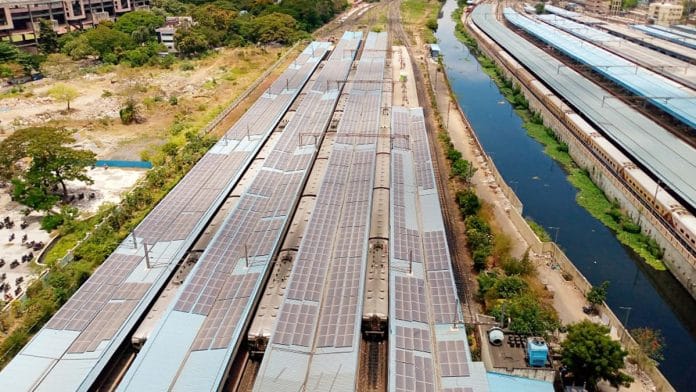Large parts of India are reeling under a heatwave, a clear manifestation of the broader climate crisis we are all facing. Measures to reduce our carbon footprint and strategies to mitigate and adapt to the impacts of climate change are needed.
India has made commitments to become net zero by 2070 and has set an ambitious target of producing 500GW from renewable sources. This requires massive investments in green technologies, infrastructure, and resilience-building measures. Since public funds won’t be enough, private capital is required at a large scale to meet these goals. India must address legal and regulatory frictions, project risks from policy uncertainty, and macroeconomic risks to ultimately reduce the cost of capital and enhance investments in the energy transition. This should be done in a way that accommodates both small and large firms, where the competitive space is not distorted in favour of big companies.
The cost of capital
Private investments are tied to the cost of capital—generally a weighted average of the interest rate that companies have to pay on debt, and the returns demanded by equity investors. In other words, it is the rate of return that investors require to make the investment worthwhile. The cost of capital is fundamentally driven by the perceived risks associated with the project. If the risk is high, investors will seek higher interest rates or greater returns to compensate for the increased uncertainty.
According to a report by the International Energy Agency (IEA), the nominal cost of capital in India is about 10 per cent, compared to around 4 per cent in Europe and the US, and 5 per cent in China. Another report published in 2020, by the IEA and the Centre for Energy Finance at the Council on Energy, Environment and Water (CEEW), also states that interest rates for 16-18 year loans for solar PV projects to be around 10-11 per cent. This increase is based on off-taker risk (the risk that distribution companies (DISCOMs) cannot pay generation companies in full or on time), the current policy, regulatory and market development. Financing costs account for almost 49 per cent of the overall costs of a solar PV plant in India, compared to about 25-31 per cent in the EU, US and China.
Also read: India must account for human costs of energy transition, prioritise social justice
Reasons for high cost of capital
Private capital faces three major impediments in India. First is the risk stemming from policy and regulatory uncertainty, where changing laws and regulations can undermine the stability and predictability essential for investment. A report by BBVA Research suggests that specific risks of renewable projects prevail in India, such as regulatory, transmission network, and off-taker. These risks include laws and regulations that are susceptible to frequent changes, delays in the signing of Power Purchase Agreements (PPAs), the risk that the transmission network may not be able to evacuate power, and DISCOMs not making payments on time or sometimes reneging on contracts altogether. These are often known as the “micro risks”. The second barrier is “macroeconomic risk”, encompassing factors such as inflation, currency volatility, and economic instability, which can significantly impact returns on investment.
Transaction costs of doing business is the third impediment. Frictions created by legal and regulatory regimes can complicate or delay investments, and sometimes prohibit them altogether. An example of this is the market for blended finance. In a blended finance instrument, public or philanthropic capital assumes the base risk. This attracts private capital into areas or projects where it otherwise wouldn’t because of high risk or low profitability. Indian regulations make a clear distinction between for-profit and not-for-profit endeavours. This inhibits the mixing of commercial sources of funds with concessional ones, and thereby de-risking of investments.
Also read: India to drive growth in oil demand till 2030, transport fuels main reason
Need for policy push
India has, so far, addressed some of these impediments on the “micro risks” by making specific interventions, but not solving the problem at a systemic level. As an example, the off-taker risk has been dealt with by administering solar and wind projects through the Solar Energy Corporation of India Limited(SECI), which maintains a payment security fund that provides greater certainty of timely payments from DISCOMs. Generators prefer signing PPAs with SECI, which in turn signs power sale agreements with DISCOMs. The Indian government has also made attempts at improving DISCOM performance through efforts such as the Revamped Distribution Sector Scheme and the Late Payment Surcharge (LPS) rules.
However, neither the arrangement with SECI, nor the schemes go to the heart of the problem, which is the State control of DISCOMs. Political interference in the setting of tariffs becomes easier, and regulatory independence becomes weaker when DISCOMs are State-owned. Reforming the current State-ownership model toward a more market-driven approach will improve autonomy, and financial viability. Finally, there is even less of an effort toward regulatory reform to solve the high transaction costs in India. This is particularly problematic because it generates a bias where large projects get through and smaller projects fall off the radar. The competitive landscape gets distorted in favour of big projects and big companies. This is not conducive to an economy-wide energy transition.
Renuka Sane is managing director at TrustBridge, which works on improving the rule of law for better economic outcomes for India. She tweets @resanering. Views are personal.
(Edited by Ratan Priya)






